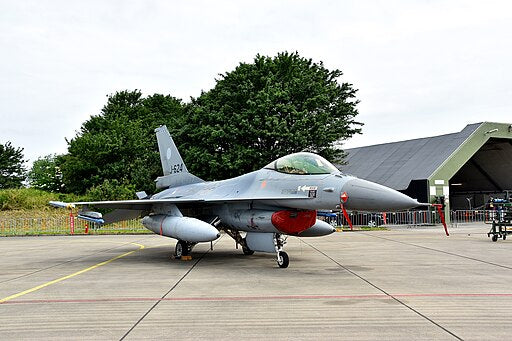For those in the know, the F-16 Fighting Falcon isn’t just another aircraft. It’s also known as the “Viper”. And while it’s undoubtedly a masterpiece of modern aviation, its soul goes beyond just the nuts and bolts. The global footprint of the F-16 and the distinctive touches various nations have added to their fleets provide a fascinating testament to its versatility and enduring appeal. Today, we journey into the diverse group of countries that have adopted the Viper and examine how these nations have infused their unique touch into this flying legend.
Belgium and the Netherlands: Early Adopters and Innovators
These European neighbors were among the first to embrace the F-16, having been part of the original four-nation consortium alongside Norway and Denmark that backed its development in the 1970s. Over the decades, both nations have tinkered with advanced avionics and weaponry, ensuring their fleets remain compatible with NATO standards. For instance, the Dutch Vipers have experienced regular upgrades, including the Mid-Life Update (MLU), which infused them with state-of-the-art radar and weapons systems, ensuring they remain formidable adversaries in the sky.
Israel: A Middle Eastern Powerhouse
Israel’s relationship with the F-16 is emblematic of the nation’s broader defense doctrine: maximize utility and potency. Their Barak (Lightning) and Netz (Hawk) variants have seen action across multiple theaters, and often, they’ve been modified to cater to Israel’s unique operational requirements. From homegrown electronic warfare systems to bespoke armament configurations, Israel’s adaptations underscore the adaptability of the Viper platform.
South Korea: The Asian Falcon’s Evolution
Korea’s KF-16 variant represents a blend of American design and Korean innovation. Collaborating with Lockheed Martin, Korea has continually modified its Vipers, especially with the KF-16C/D Block 52 models. These jets are equipped with an advanced APG-68(V)7 radar system and are compatible with a broader range of weapons, emphasizing the importance of versatility in an ever-shifting geopolitical landscape.
UAE: Desert Vipers with a Sting
The United Arab Emirates’ F-16 E/F Desert Falcon is more than just a variant; it’s a comprehensive overhaul. Boasting improved avionics, conformal fuel tanks, and an infrared search and track system, the Desert Falcon is tailor-made for operations in the Middle East’s challenging environments.
Greece and Turkey: Aegean Rivals with Shared Wings
Despite their political differences, Greece and Turkey both operate F-16s, with each nation adding its flair to the aircraft. Greece’s Zeus variant and Turkey’s unique configurations highlight the juxtaposition of shared equipment and regional rivalry. Their periodic upgrades mirror each other, showcasing the aircraft’s role as a stabilizing (or contesting) factor in Aegean airspaces.
Customizations Across the Globe
The nations mentioned above represent just a fraction of the F-16’s global operators. From the Chilean Air Force’s Peace Puma to Iraq’s Block 52s, the Viper’s adaptability remains its most potent feature. Nations mold and modify aircraft based on regional threats, technological advancements, and operational philosophies.
Conclusion: A World United by Wings
While the F-16 was birthed in the hallowed halls of American innovation, its global presence is a testament to its universal appeal and adaptability. Each nation that operates the Viper has not just acquired an aircraft; they’ve received a canvas, ready to be painted with their unique strategic, technological, and operational colors. The F-16’s global tapestry, full of diverse modifications and customizations, reaffirms its status as a truly international bird of prey.
For more insights into the F-16 Viper and other important military aircraft, visit Aces In Action. Here, you’ll find a fantastic piece of artwork by Craig Tinder titled “Triple Victory,” which commemorates Retired Col. Robert “Wilbur” Wright and his actions on 28 February 1994. This print also includes a relic from the recovery of F-16D 84-1320.
Triple Victory – F-16 Fighter Aviation Art by Craig Tinder
28 February 1994 – Two F-16C Vipers from the 526th Fighter Squadron “Black Knights” engaged six Serbian J-21 Jastreb aircraft which had entered a no-fly zone to conduct a bombing raid. “Black 03” piloted by Capt. Robert “Wilbur” Wright downed three of the J-21s, scoring direct hits with an AIM-120 AMRAAM and two AIM-9 Sidewinder missiles, the first single-mission triple victory by a U.S. Air Force pilot since the Korean War.






Share:
Strategic Bombing Campaign Over Europe: Tactics, Goals, and Controversies
Top 5 Hardest Planes to Fly in World War II